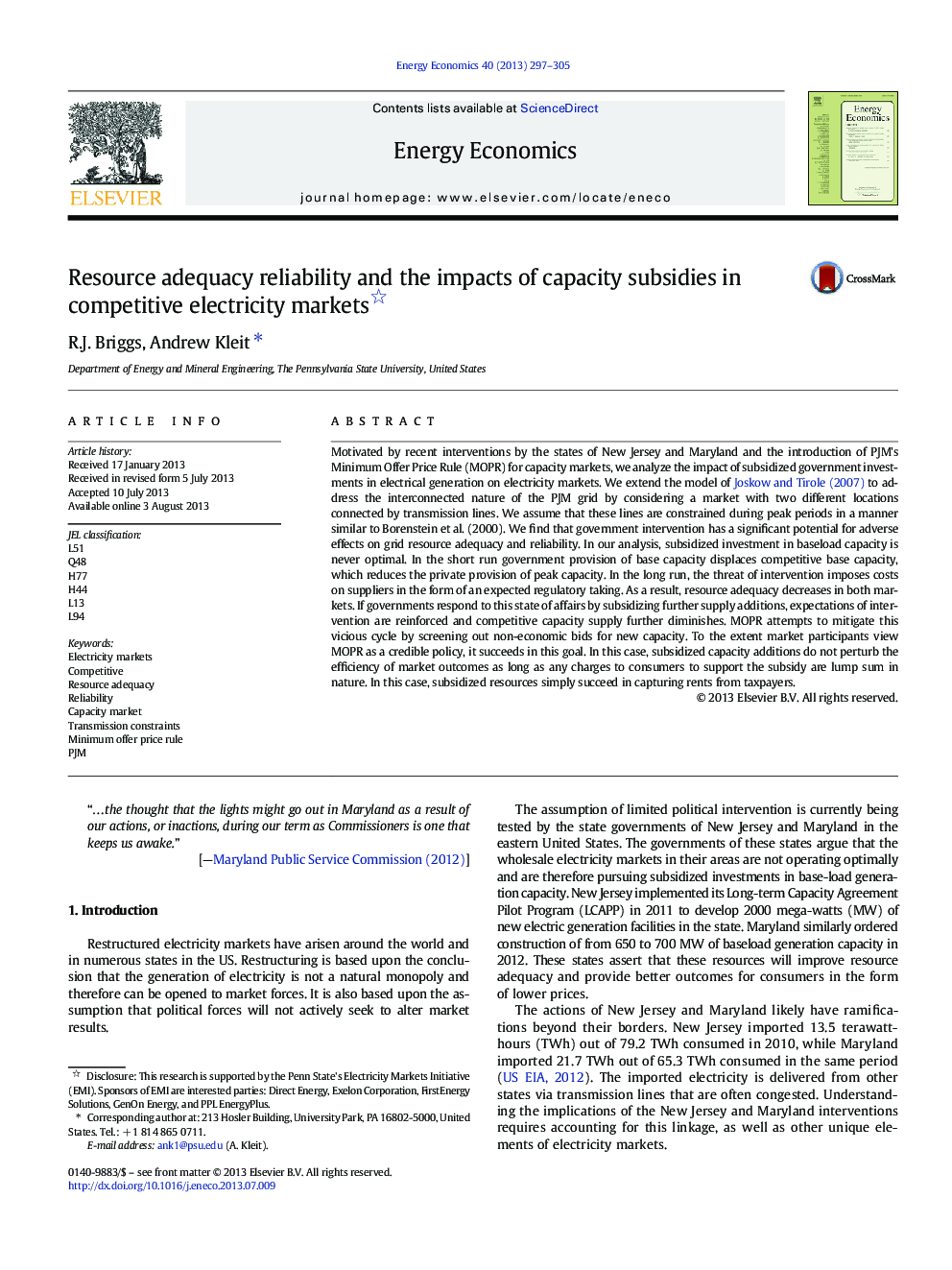| کد مقاله | کد نشریه | سال انتشار | مقاله انگلیسی | نسخه تمام متن |
|---|---|---|---|---|
| 5064766 | 1476723 | 2013 | 9 صفحه PDF | دانلود رایگان |

- We analyze the impact of subsidized government investments in electrical generation.
- In particular, we focus on the implications for long-run resource adequacy reliability.
- We find that government intervention has significant potential for adverse effects.
- Policies such as PJMs MOPR may mitigate these effects if the policy is viewed as credible.
Motivated by recent interventions by the states of New Jersey and Maryland and the introduction of PJM's Minimum Offer Price Rule (MOPR) for capacity markets, we analyze the impact of subsidized government investments in electrical generation on electricity markets. We extend the model of Joskow and Tirole (2007) to address the interconnected nature of the PJM grid by considering a market with two different locations connected by transmission lines. We assume that these lines are constrained during peak periods in a manner similar to Borenstein et al. (2000). We find that government intervention has a significant potential for adverse effects on grid resource adequacy and reliability. In our analysis, subsidized investment in baseload capacity is never optimal. In the short run government provision of base capacity displaces competitive base capacity, which reduces the private provision of peak capacity. In the long run, the threat of intervention imposes costs on suppliers in the form of an expected regulatory taking. As a result, resource adequacy decreases in both markets. If governments respond to this state of affairs by subsidizing further supply additions, expectations of intervention are reinforced and competitive capacity supply further diminishes. MOPR attempts to mitigate this vicious cycle by screening out non-economic bids for new capacity. To the extent market participants view MOPR as a credible policy, it succeeds in this goal. In this case, subsidized capacity additions do not perturb the efficiency of market outcomes as long as any charges to consumers to support the subsidy are lump sum in nature. In this case, subsidized resources simply succeed in capturing rents from taxpayers.
Journal: Energy Economics - Volume 40, November 2013, Pages 297-305